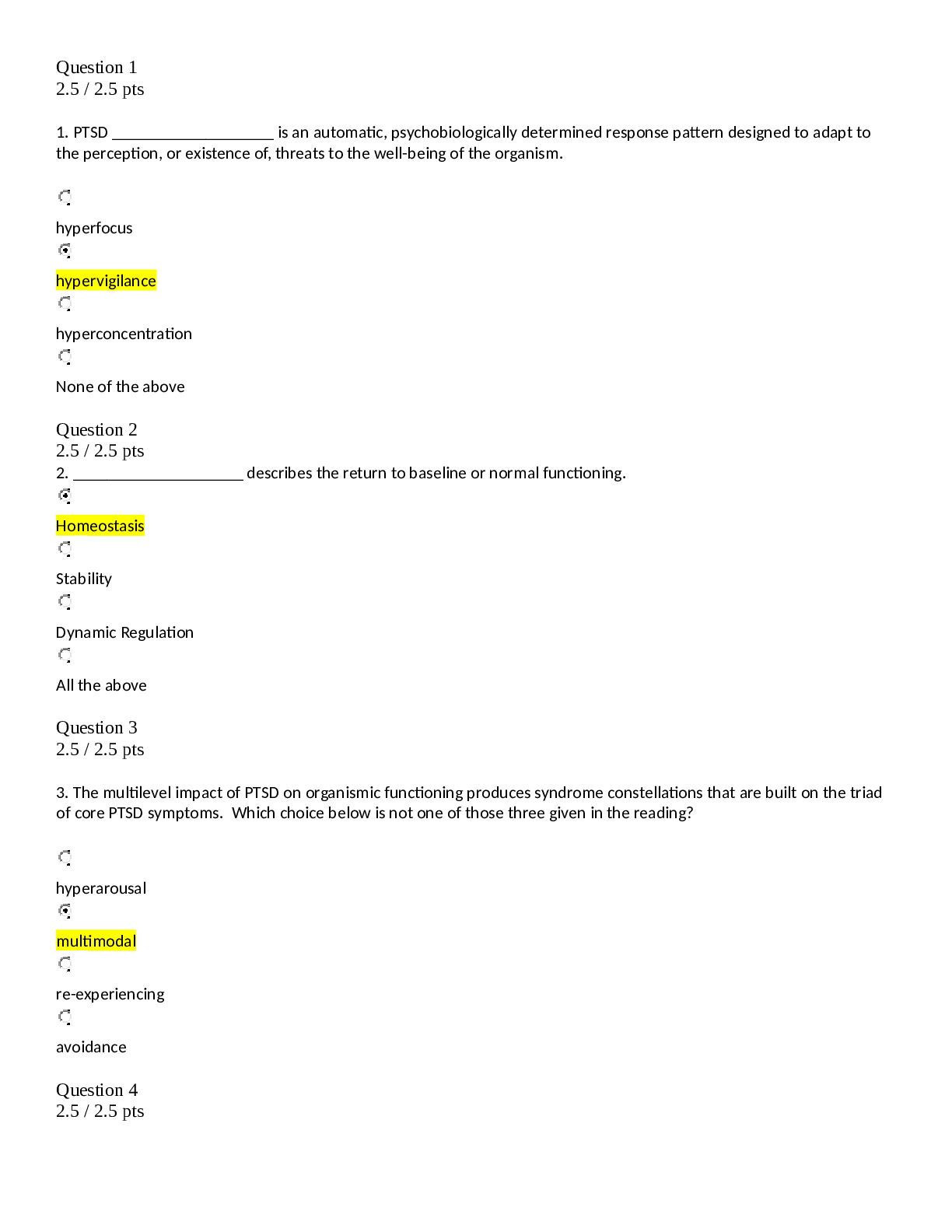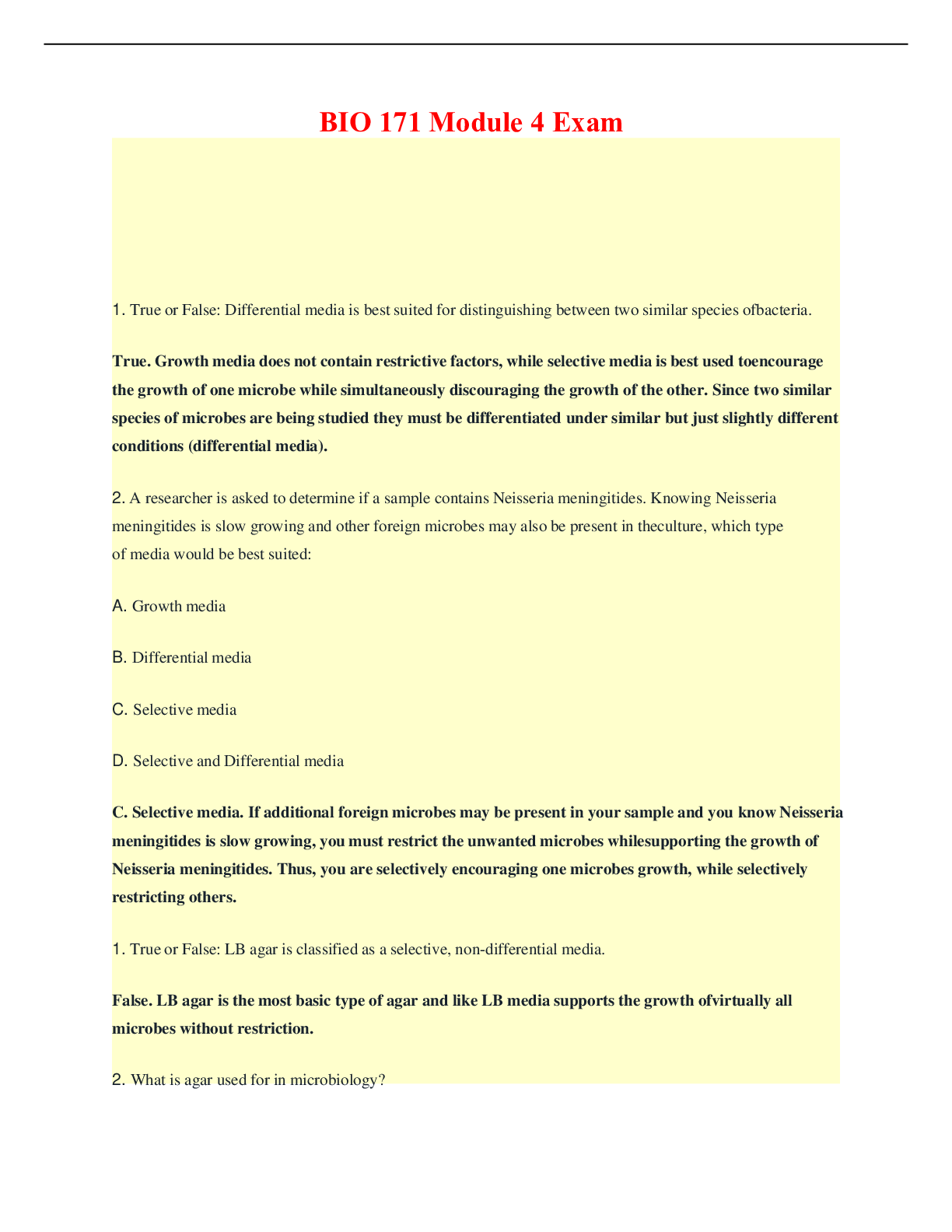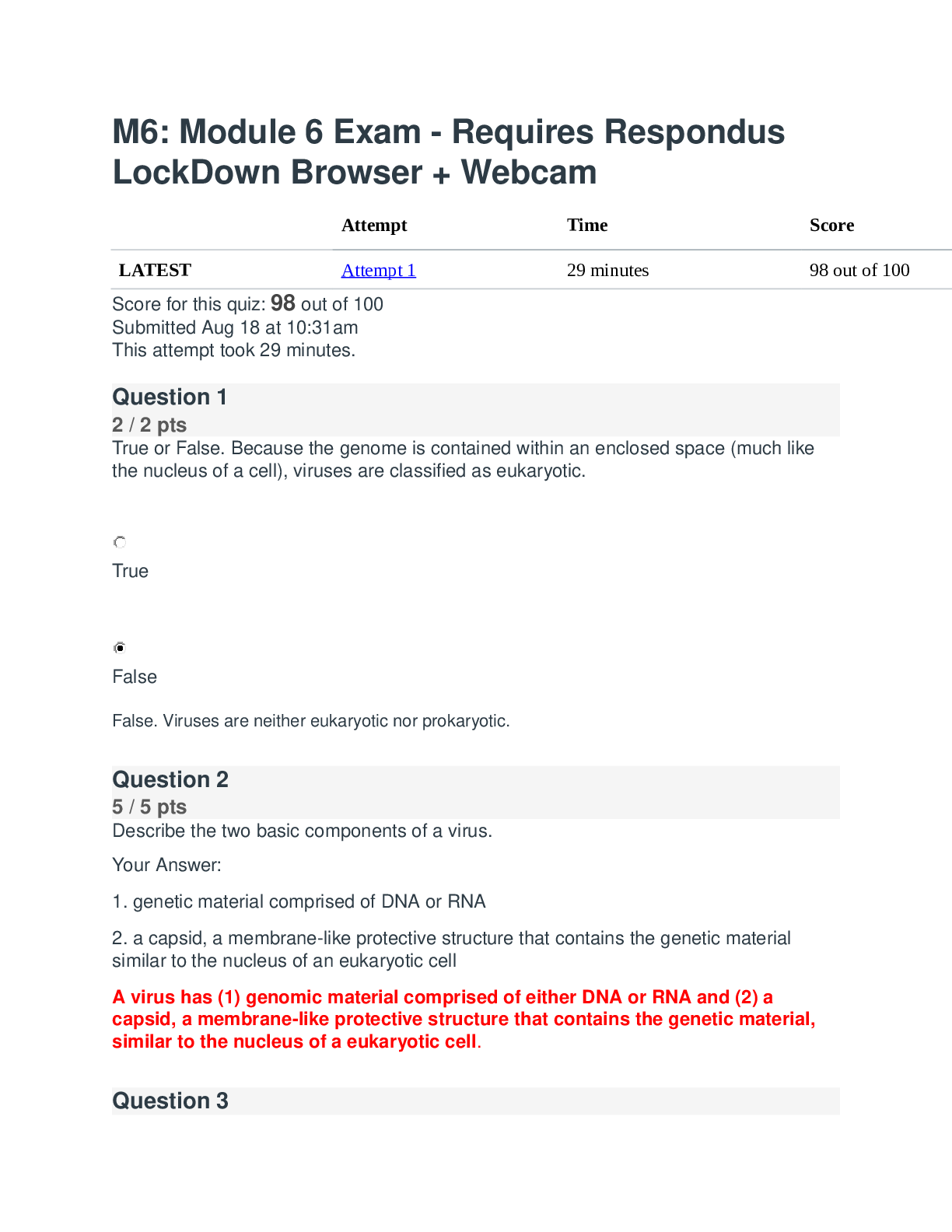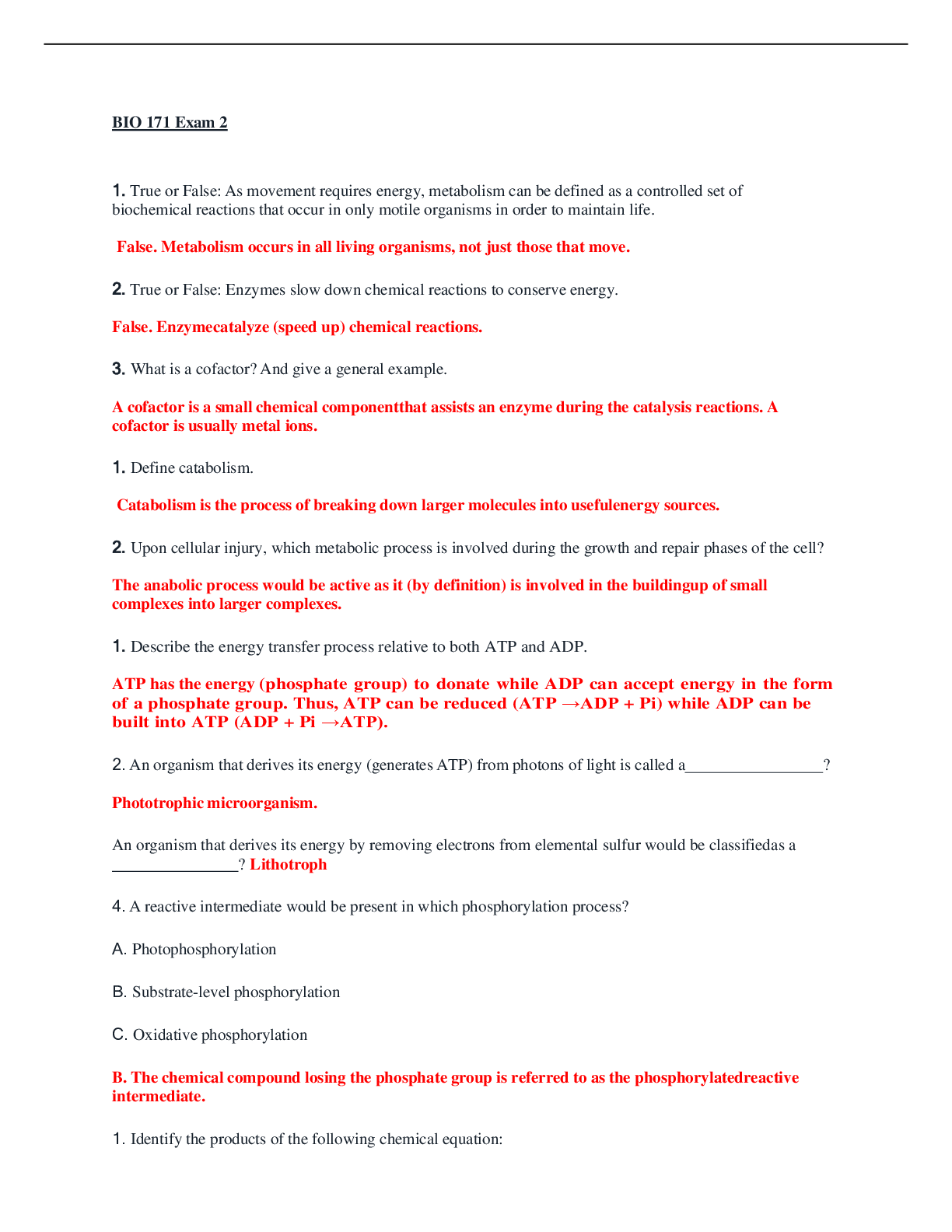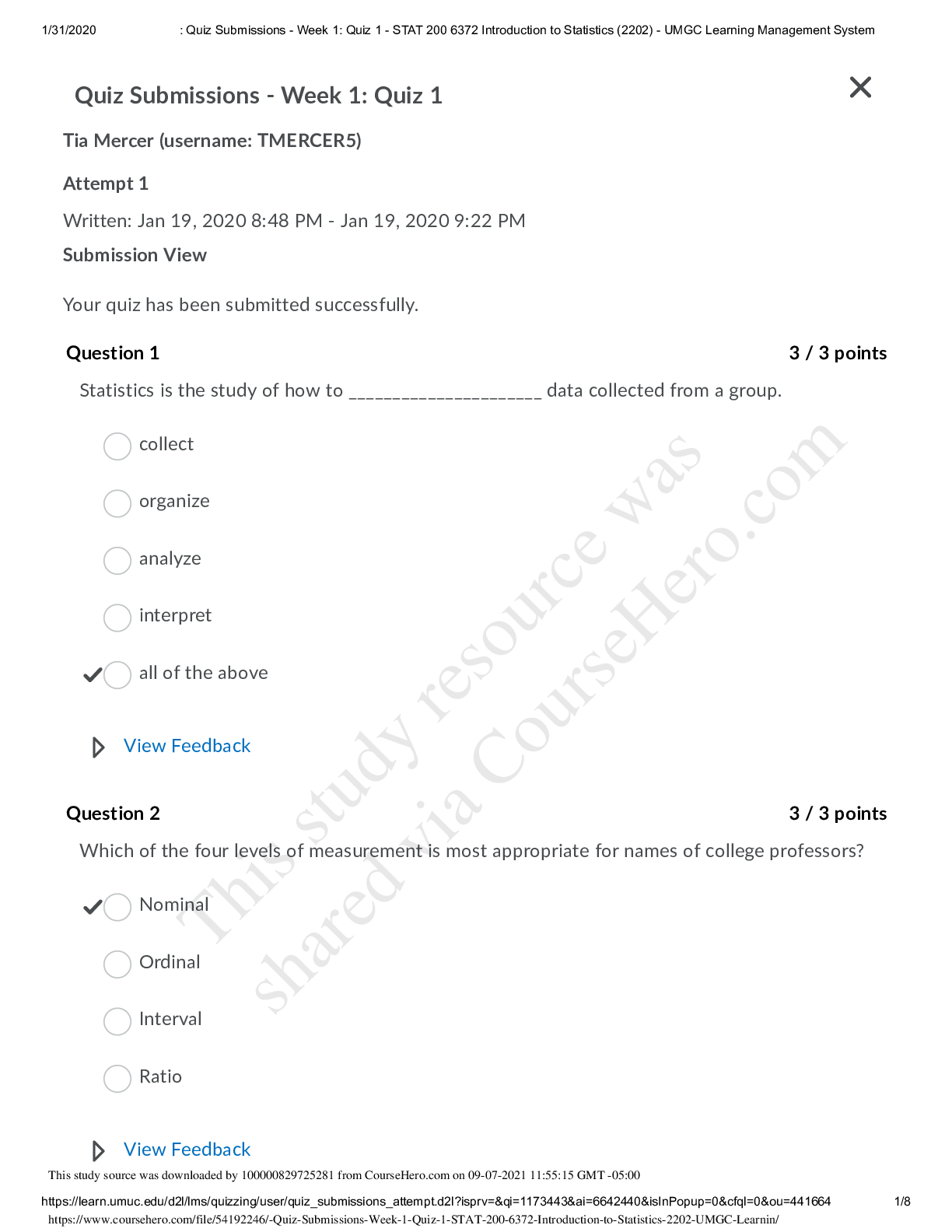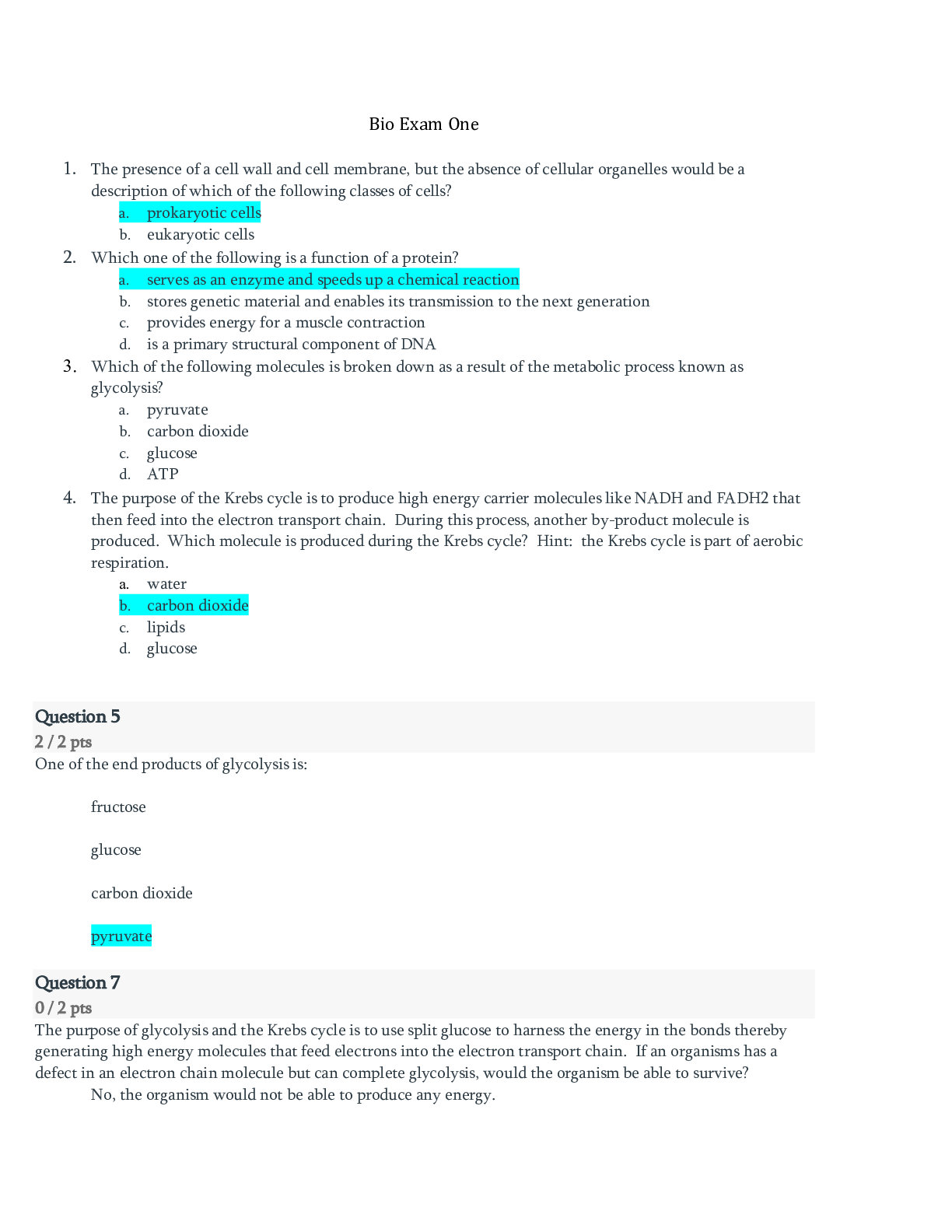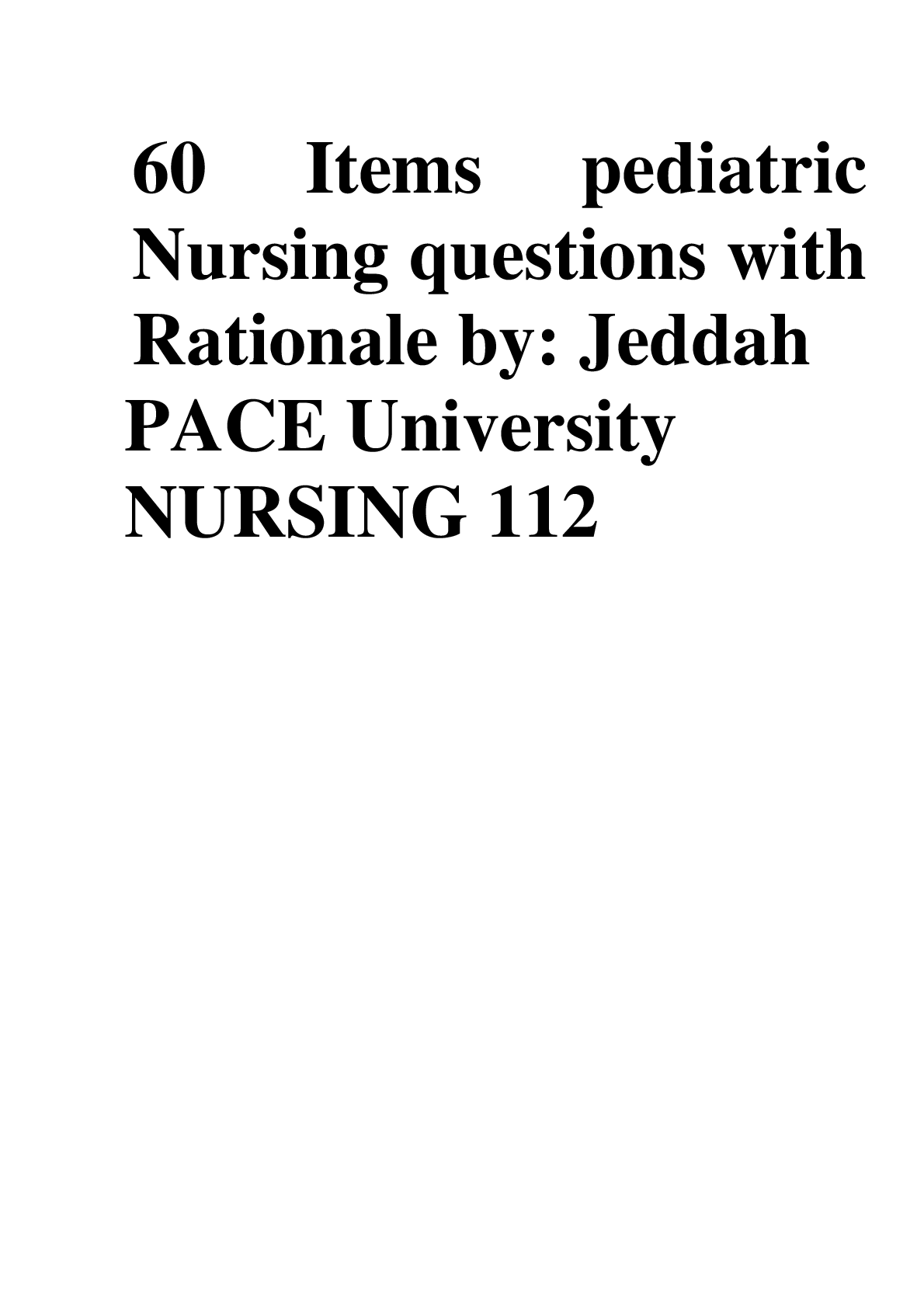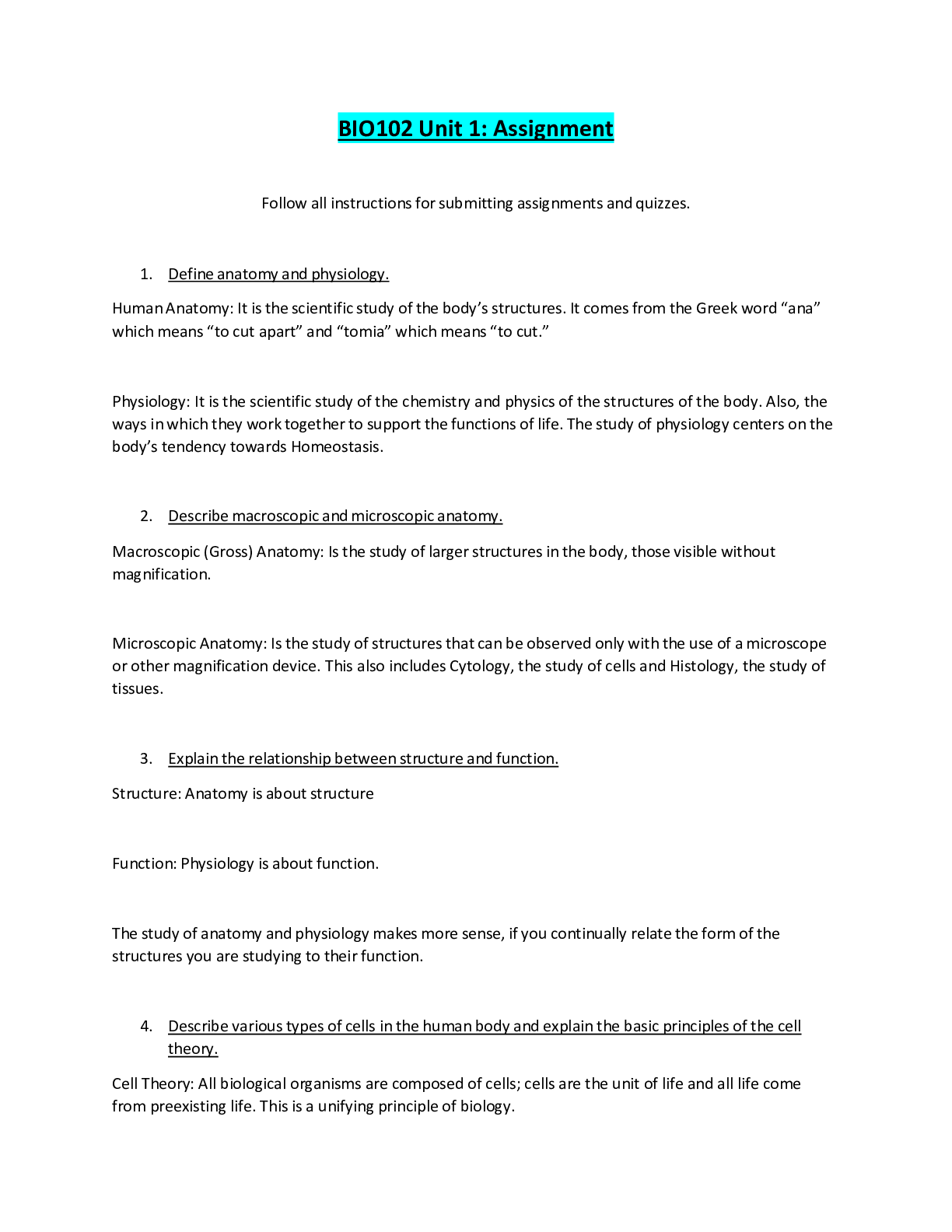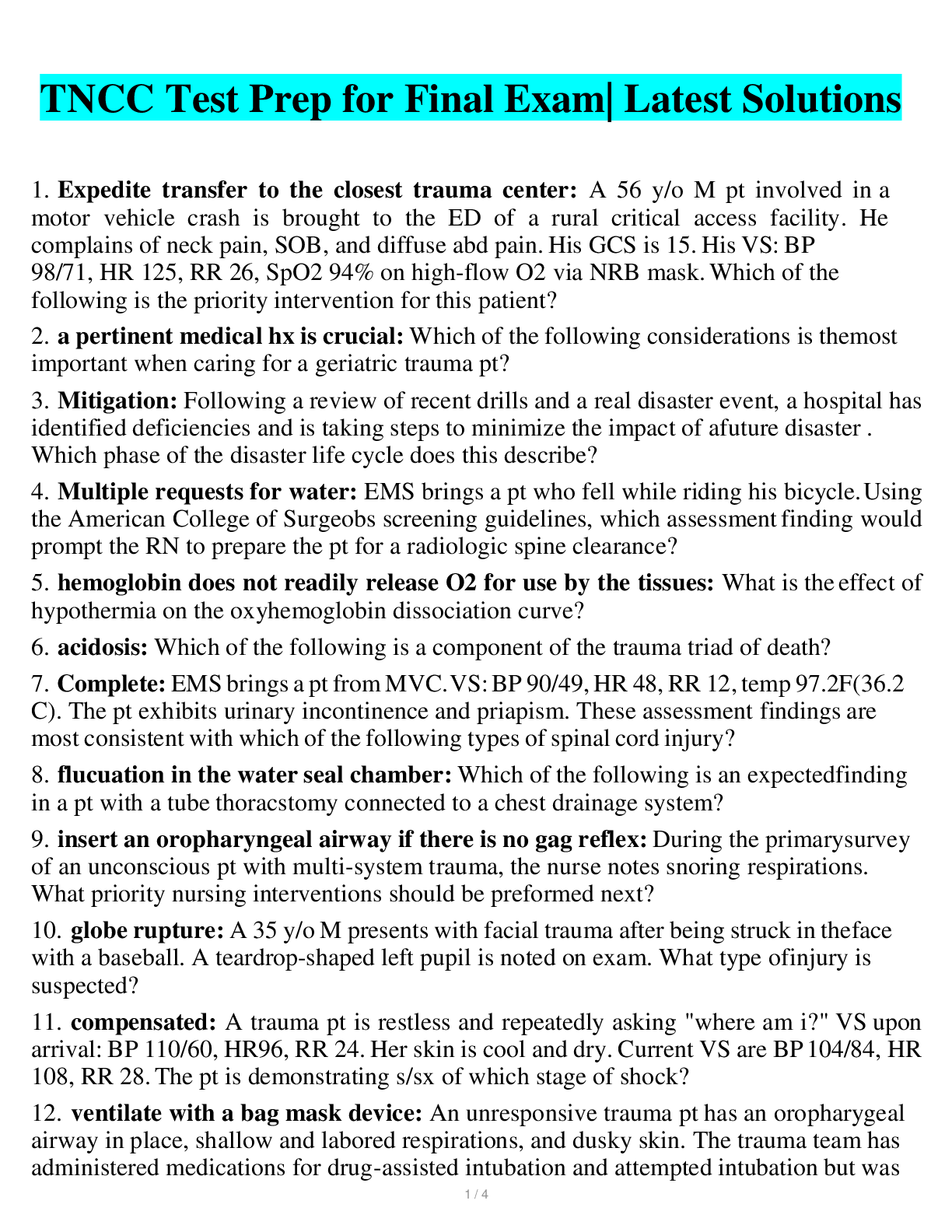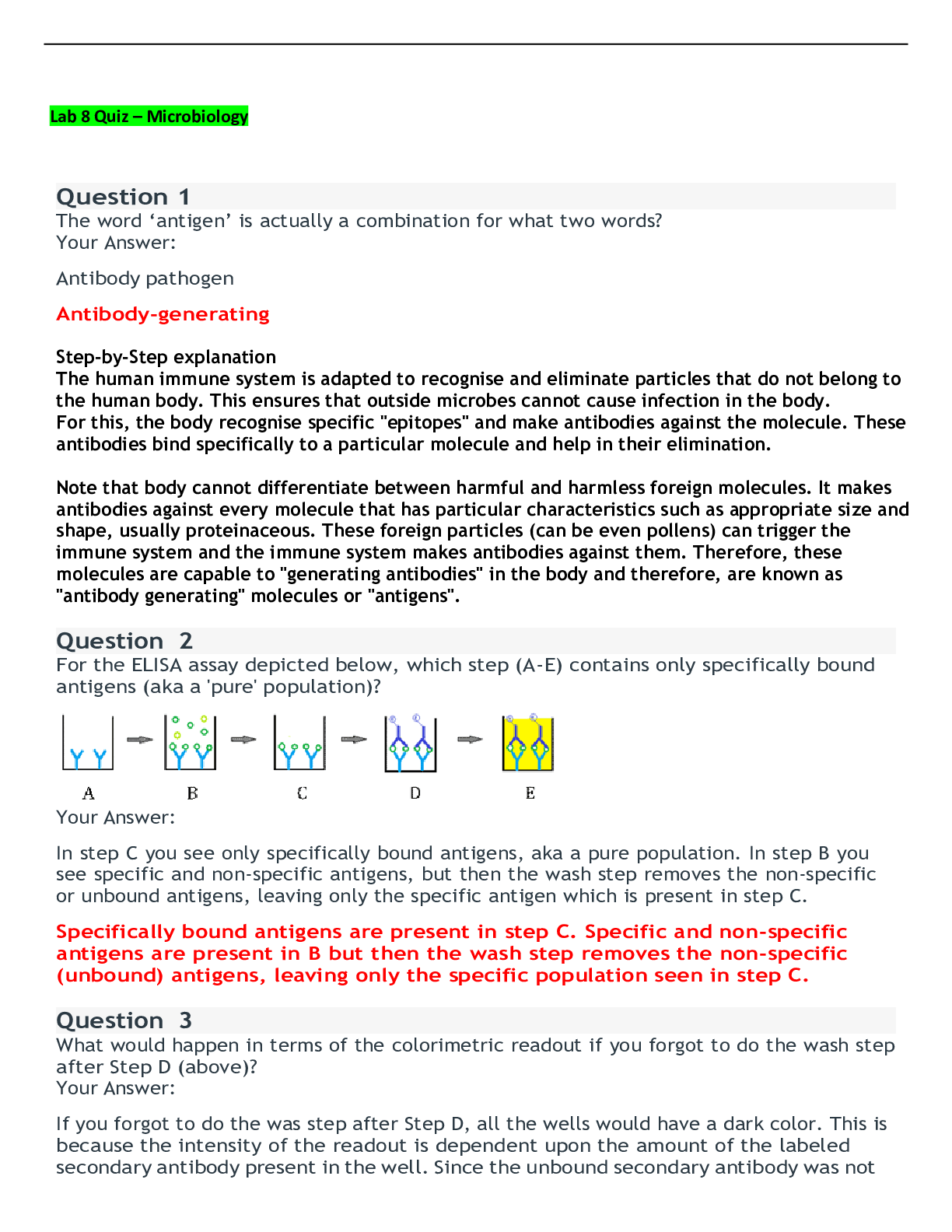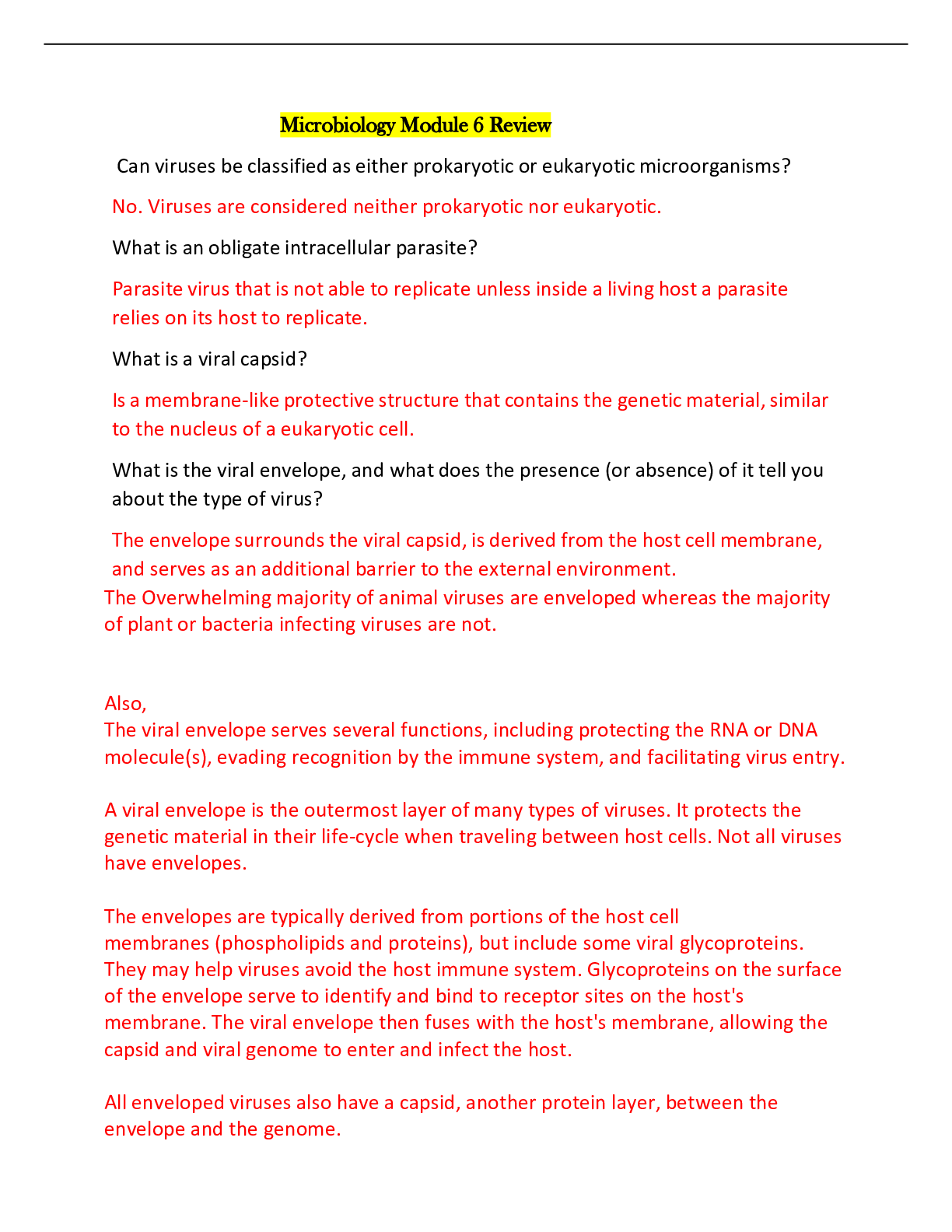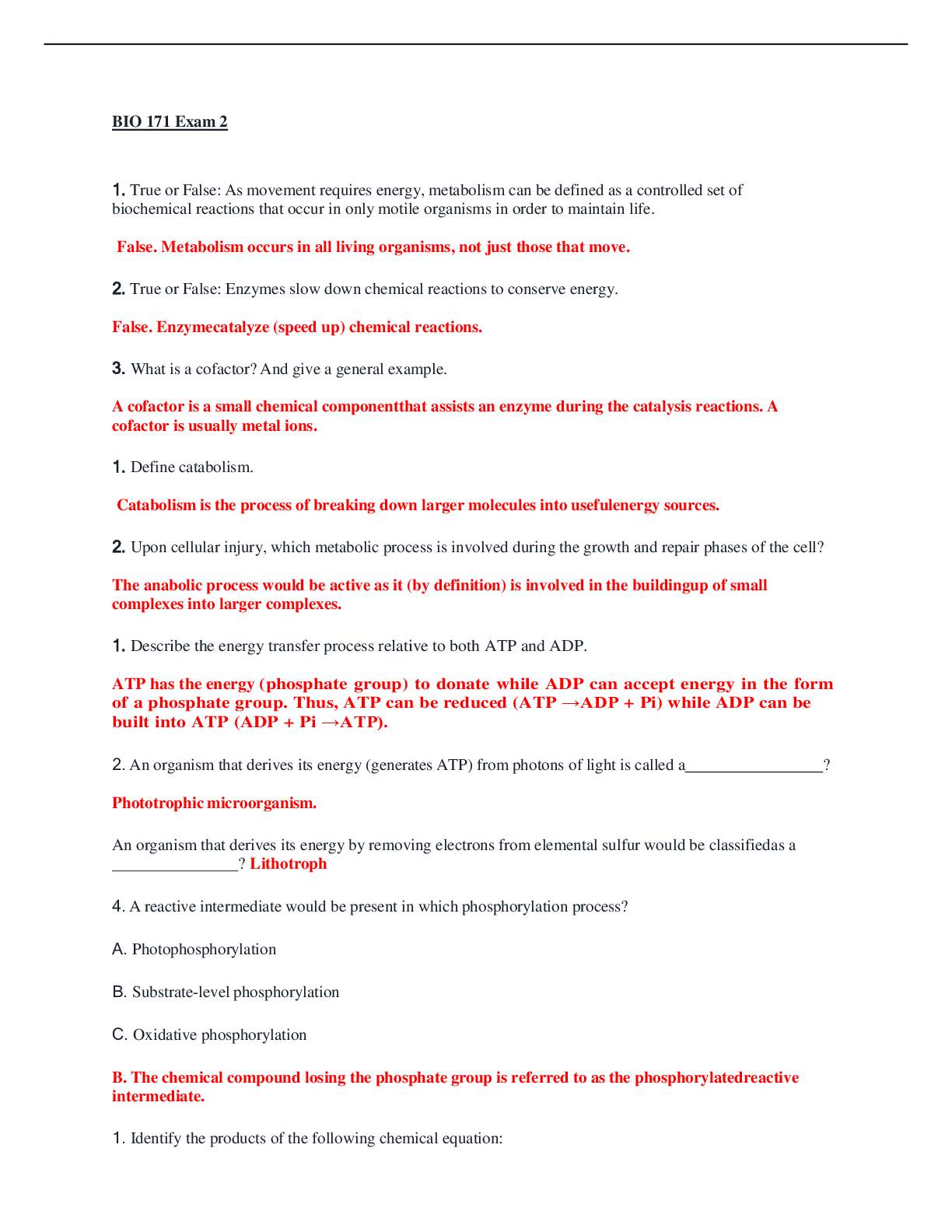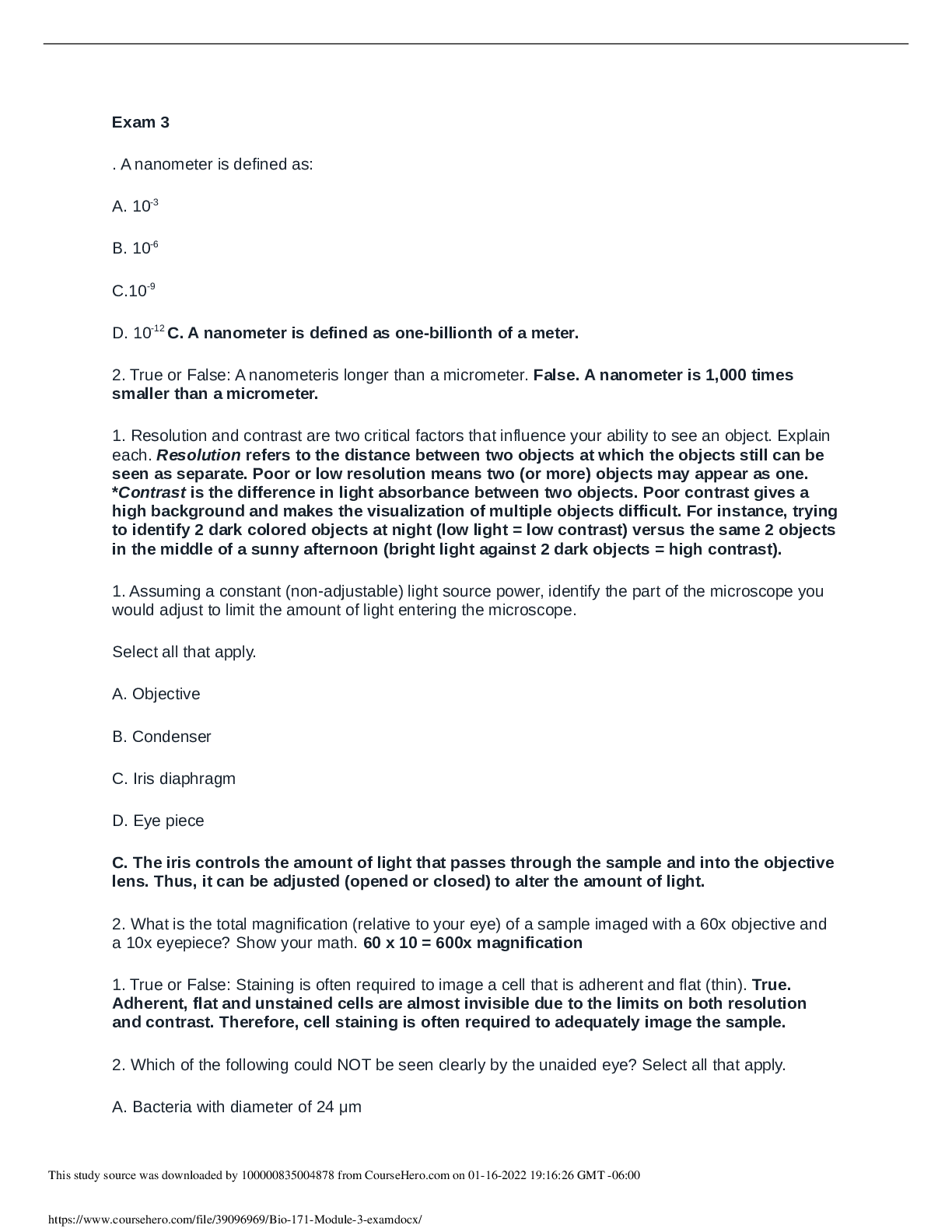Micro Biology > EXAM > BIO 171 Micro Exam 1 (ASSURED A) <100% CORRECT> GRADED A+ | LATEST SOLUTIONS | (All)
BIO 171 Micro Exam 1 (ASSURED A) <100% CORRECT> GRADED A+ | LATEST SOLUTIONS |
Document Content and Description Below
BIO 171 Micro Exam 1 (ASSURED A) <100% CORRECT> GRADED A+ | LATEST SOLUTIONS | Question 1 3 / 3 pts True/False. A virus is classified as a microbe. True Although viruses are not living and as su... ch are not considered microorganisms, they can, however, be classified as microbes, a more general term that includes microorganisms and viruses. Step-by-Step explanation The word "microbe" is a broad term that would describe any microorganism that is microscopic in size. It is not limited to only unicellular organisms, as some multicellular organisms are also microscopic. The term would include bacteria, fungi, protozoa, archaea, algae, and parasites. Viruses are nonliving particles of genetic material enclosed in a protein or lipid shell. However, when they enter into a host cell, they are able to replicate, making the definition of "nonliving" a little blurry. Although the consensus is not clear, some scientists also consider viruses as microbes. Because of this, the word microbe may encompass all microorganisms and viruses. References: Defining Microbes. (n.d.) LibreTexts. https://bio.libretexts.org/Bookshelves/Microbiology/Book%3A_Microbiology_(Boundless)/1%3A_Intro duction_to_Microbiology/1.1%3A_Introduction_to_Microbiology/1.1A%3A_Defining_Microbes Wagner, R. R. and Krug, . Robert M. (2020, November 12). virus. Encyclopedia Britannica. https://www.britannica.com/science/virus Question 2 3 / 3 pts True or False: The smallest biological unit of life is the molecule. False The smallest biological unit of life is the cell. Question 3 4 / 4 pts What are the four main types of macromolecules found in cells? Proteins, Lipids, Nucleic acids and Polysaccharides Question 4 3 / 3 pts Proteins are formed from various combinations of [answer1] of which there are [answer2] known forms. 1. Amino acids 2. 20 Step-by-Step explanation Proteins are formed from various combinations of AMINO ACIDS of which there are L- amino acids and D- amino acids are known forms. Question 5 4 / 4 pts How many amino acids are classified as being essential amino acids? 9 Question 6 10 / 10 pts What are the two major types of nucleic acids and their roles? There are two major types of nucleic acids: DNA (deoxyribonucleic acid) and RNA (ribonucleic acid). Nucleic acids are chemical molecules that carry genetic information within the cell. DNA contains a vast amount of hereditary information and is responsible for the inheritable characteristics of living organisms. RNA is responsible for deciphering the hereditary information in DNA and using it to synthesize proteins. Question 7 10 / 10 pts Complete the following RNA strand, and indicate how many bonds are formed for each complementary pair: [Show More]
Last updated: 1 year ago
Preview 1 out of 6 pages
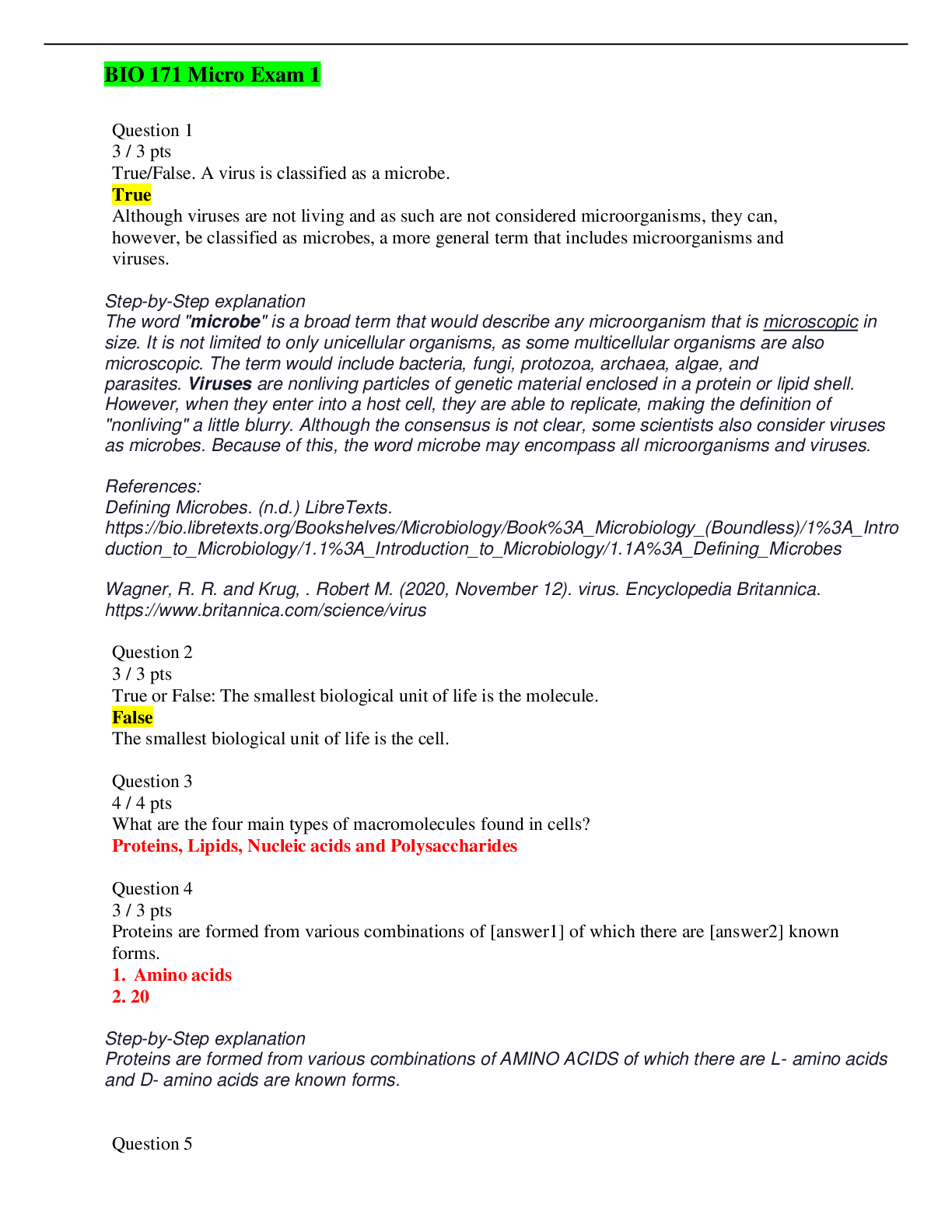
Also available in bundle (1)
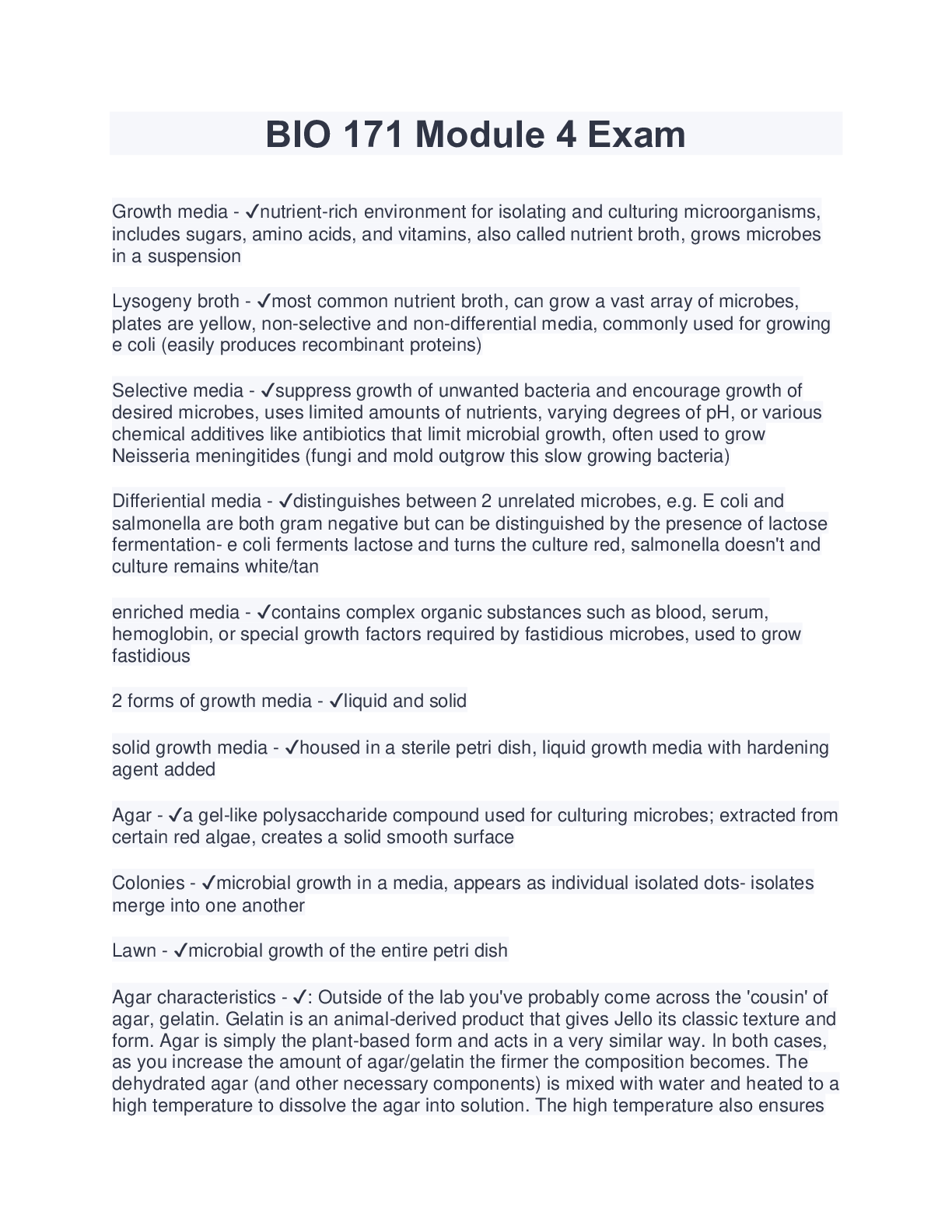
MICROBIOLOGY BIO 171; COMPLETE EXAM MODULES
MICROBIOLOGY BIO 171; COMPLETE EXAM MODULES
By 1exampro 2 years ago
$22.5
6
Reviews( 0 )
Document information
Connected school, study & course
About the document
Uploaded On
Feb 08, 2022
Number of pages
6
Written in
Additional information
This document has been written for:
Uploaded
Feb 08, 2022
Downloads
0
Views
52


